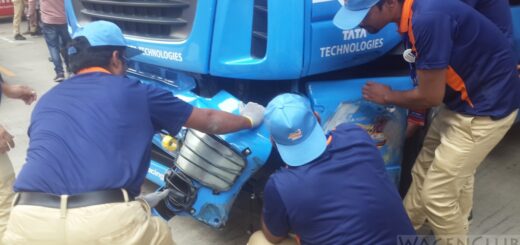Self-Driving Cars: Better Than You, But What’s The Hold-up??
It is impressive to see how fast self-driving cars have evolved. They are said to be smarter and safer than human drivers. Good things are aplenty. And yet, what prevents them to get on to our roads at this stage?
One idea that remains most bewitching in the automotive tech-world is cars that drive themselves. Not just today or in recent years, to be frank, this idea of self-driving cars is as old as the automobile itself, rooting to the fantasies of some great minds. But then, it is the electronics and computer technologies that actually gave the very momentum to it and as every great idea requires some pathfinder to crack the nut, comes the Google. Not many seemed convinced until Google’s team started modifying some Prius and Lexus hybrids and roam around. Now, years later, from Audi to Ford, every big car manufacturers are beginning to follow Google’s lead to produce cars cool enough to drive themselves.
Actually, I didn’t expect those Google’s prototypes to be pretty advanced as they are now. They have been proven to drive much smoother and safer than average driver. Though real life situations involve startling challenges thrown towards drivers, especially every damn nuisances we find on our roads, and even adverse weather conditions like rain or snow, it would be right to say that technologies are rapidly improving. As we know, Google is not the only one and global companies are on the race to come up with something pretty good on self-driving cars. So, technologies are fast improving in myriad aspects and are certain to turn in realities.
Considering the fact that almost 90 percent of road mishaps are attributed to human errors, we can say self-driving cars and trucks are a moral imperative to our societies. Robotic cars do not sleep on wheels, nor they get drunk or distracted by cell phones! A report by the Eno Center for Transportation has estimated that just 10 percent of cars on roads if they are autonomous, would prevent 211,000 accidents every year. This means reducing the number of traffic deaths, which accounts for a huge share globally. Virginia Tech studies have shown that even cars that are not fully autonomous but which automate some of the most dangerous aspects of driving (such as Lane drift warnings, emergency driver assistance function as in 2017 Audi A6, etc.) could have as big an effect as seat belts have had.
Also Read: Freightliner Inspiration Self-Driving Truck Just One Level From Complete Automation
And yes, traffic jams gone since automated cars can drive much more sensibly and smartly to avoid traffic than we do (no rage and race!). Leisure time increased – owners can do more productive things on their car trips, like read or even drink (who cares now?). Even they would care for our environment as well. Since such cars can drive frugally by make split second changes to improve their fuel efficiency and travel closer together to avert traffic snarls, they would save hours of driving time and fuel phenomenally. Thus reduced pollution and fuel imports, forex saving, economic virtue, so on and so forth.
Volvo has recently showcased its autonomous driving prototype with eco-driving features that can align themselves on the road amid other cars while moving, so as to make use of frictional and air flow to reduce its fuel consumption. The electric car and alternative fuel technology is also leaping forward rapidly in recent times, and so we can be sure that autonomous car will turn either ‘e’ or hybrid once the stage is all set. Sounds magical isn’t it? – but they make a point.
But then, you can’t be too much excited and quick to cheer about, because getting all cars on road (if not all vehicles) automated isn’t that easy. It’s going to be damn knotty rather, as the bottlenecks – economics to ethics – are more than just complex to find some ways out.









